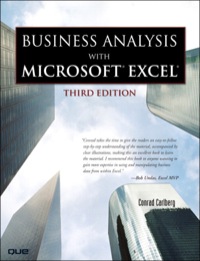Question
ABC does not have any cash at the end of year 1. Your job is to make ABC cash flow in both years 2 and
ABC does not have any cash at the end of year 1. Your job is to make ABC cash flow in both years 2 and 3 (positive ending cash balances on the balance sheets); using the cash 3 factors (Volume, Margin and Working Capital). YOU MUST DETERMINE ABCS SALES INCREASE (Volume) for years 2 and 3 and the RELEVANT days in accounts receivables, days in inventory and days in accounts payable (Working Capital) in order for ABC to cash flow. You must use the Margin Information given to you in the case study (gross profit % and operating expense %). You will need to try several different combinations until ABC cash flows in both years 1 and 2. Other than that, use the other information given in the case below.
ABC Company is a start-up medical equipment manufacturing company. ABC developed a blood testing device that accurately diagnoses the Ebola virus in 15 minutes or less. In year 1 ABC financing consisted of founders (shareholders) equity investment totaling $369,074 and a $3,800,000 bank loan, totaling $4,169,074.
In year 1 ABC generated a small net profit of $163,645 on total sales of $3,000,000, a gross margin of 40% and operating expenses of 25%. At the end of year 1 ABC did not have any cash on its balance sheet ($0 cash balance), which means they spent all of their financing in year 1[$3,800,000 + $369,074 = $4,169,074]. ABCs year 1 cash conversion cycle totaled 41 days, which consisted of days in accounts receivable of 37 days, days in inventory of 49 days and days in accounts payable of 45 days. The founders (shareholders) have no more cash to invest in the company, the company does not qualify for additional debt financing and ABC cannot raise additional equity financing.
ABC believes it can reasonably achieve a 37% gross margin for years 2 and 3 and reduce operating expenses to 19% and 14% of sales for years 2 and 3, respectively. Furthermore, in order to increase sales ABC must invest $75,000 and $950,000 in capital expenditures in years 2 and 3, respectively. Also, ABC must pay the principal and interest payments on the original $3,800,000 debt obligation in years 2 and 3.
Step by Step Solution
There are 3 Steps involved in it
Step: 1

Get Instant Access to Expert-Tailored Solutions
See step-by-step solutions with expert insights and AI powered tools for academic success
Step: 2

Step: 3

Ace Your Homework with AI
Get the answers you need in no time with our AI-driven, step-by-step assistance
Get Started


